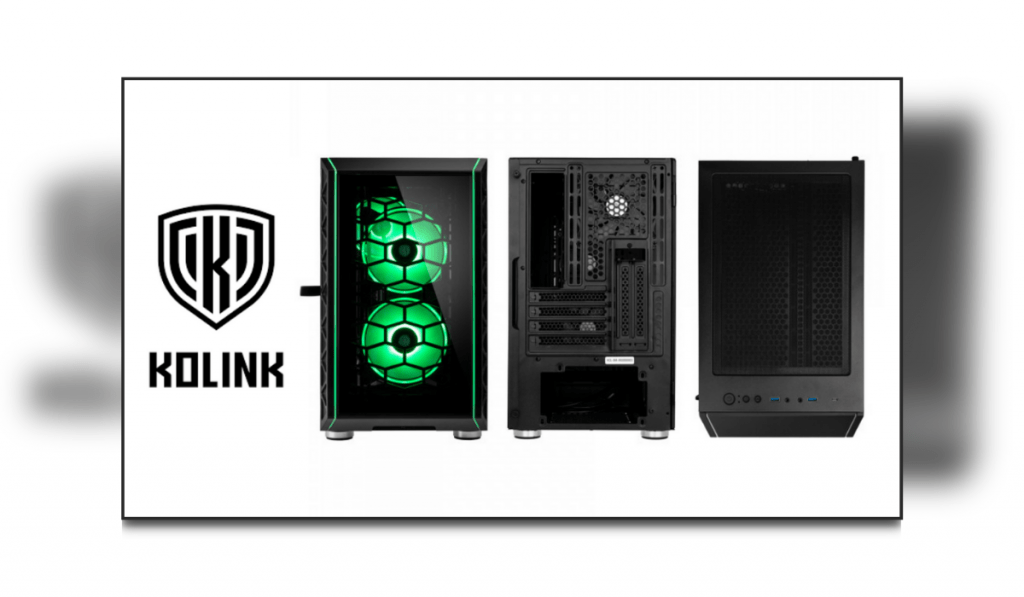
Recently I had the pleasure of transplanting a PC into the new Kolink Citadel Glass SE. With its premium looks thanks to a glass front and side panel as well as rocking 3 included ARGB fans, will the case be functional as well as good-looking?
Journey To The Citadel Glass Tower
Ok, let’s get started and see how it goes! If you enjoy my review please remember to leave a like and a comment below. If you don’t then my name is Simon. 😉
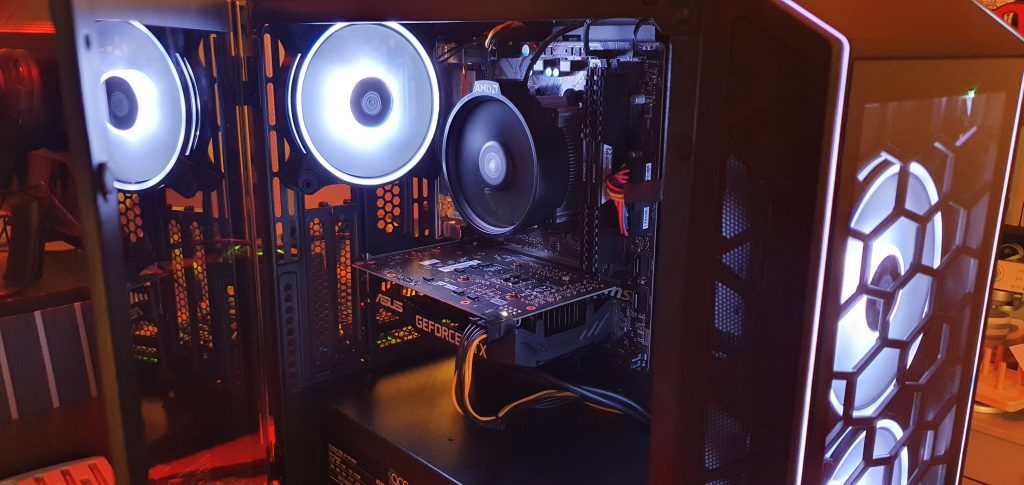
Design
It may be suitable for Micro ATX motherboards however you are certainly not short of space. Measuring in at 230mm wide, 395mm high and 403mm deep there is ample room for manoeuvring around when installing all of the components.
The case is mainly made of steel giving it a sturdy and robust feel while the tempered glass-hinged door is a fantastic bit of engineering. Mainly as it slides off the hinges so easily to allow access. The door is held closed by magnets meaning that you do not have to faff around with thumbscrews. For airflow, there are removable meshed vents located on the top and bottom of the case as well as a mesh on the side. I was a little unsure why there was a large unmeshed gap below the lowest front fan but perhaps the air does not get drawn so much through there.
As mentioned the Kolink Citadel Glass SE case comes preinstalled with 3 120mm ARGB PWM fans. 2 are on the front and one on the rear. There is the capacity to add a further 2 fans to the roof and all of the fans can be upgraded to 140mm if desired.
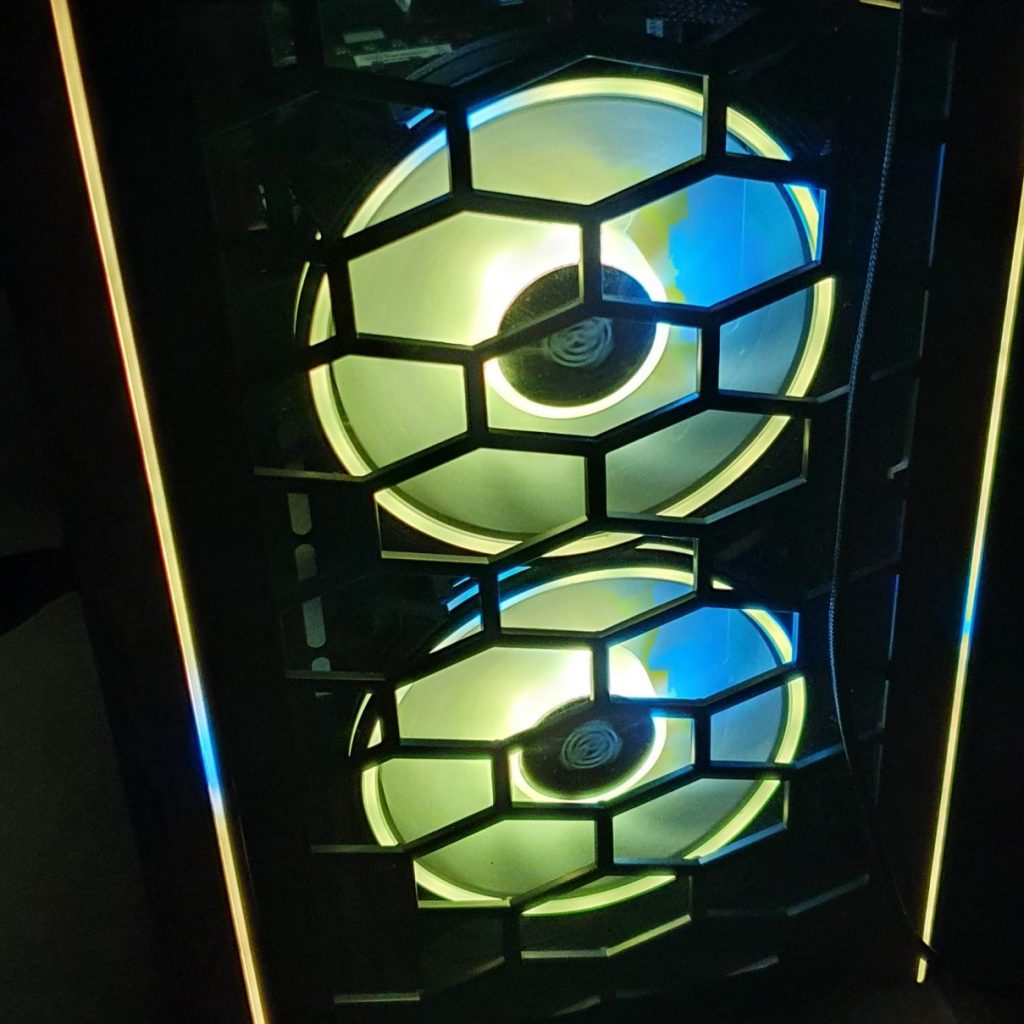
If you are a fan of radiators then you can mount these either at the front or top of the case with Kolink allowing a 240mm rad to the roof and either a 240 or 280mm to the front.
Should you be anything like me when it comes to the number of drives you have accumulated then you’re in luck. The Citadel Glass SE has capacity for a maximum of 4 2.5″ internal drives with 2 of them also accepting 3.5″ versions.
There are 4+2 expansion slots on the rear and when it comes to the biggest GPU that can fit, the case can squeeze in anything up to 345mm, so long as you are not using a radiator.
Finally, the I/O panel allows for a convenient USB-C connection as well as 2 USB-A. There are also audio outputs and a button to control the fan LEDs.
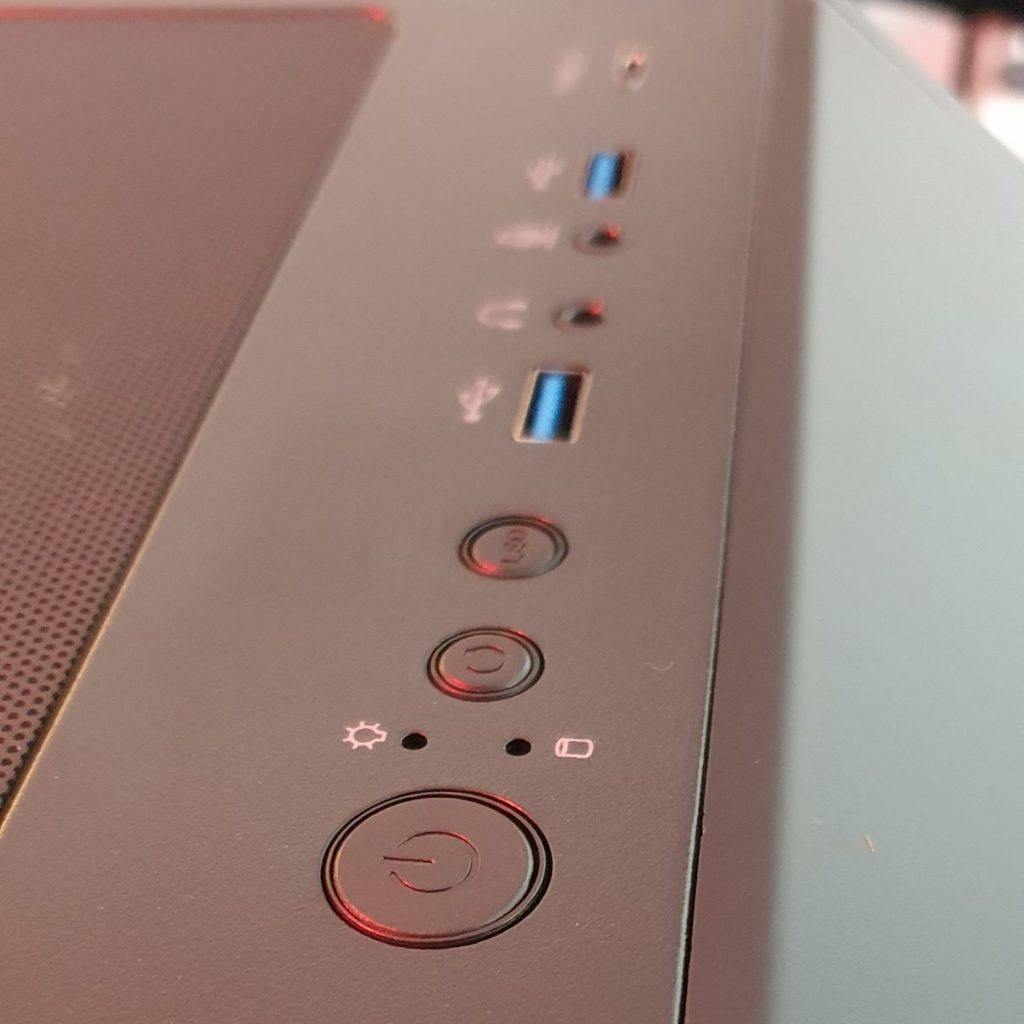
Ease Of Working Inside
The Citadel Glass SE came with a handy pack of accessories including component screws, motherboard standoff screws and cable ties. There was no standoff screw socket however I did have the correct head in my driver set luckily.
The glass side coming straight off as well as the thumb screwed opposite metal side meant it was time for business.
With the standoff screws coming preinstalled I only had to move a couple to accept the microATX motherboard that I was installing. With everything being black inside good lighting is paramount for the ease of the build!
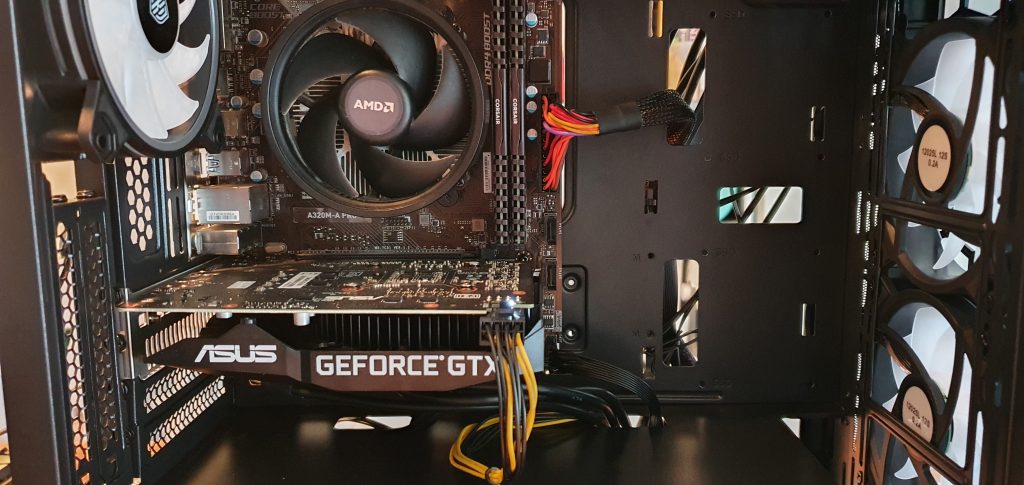
The PSU slid in easily with everything aligning where it should do with a lovely amount of space for the cabling to hide below. Mounting the HDD and SSDs were of no issue either.
Cable management is always a fairly big deal, nobody likes seeing unruly cables (unless you are hiding the case below the desk of course). Thankfully there are well-engineered cable routes throughout the unseen side of the case that includes regular cable tie points. Equally useful are the number of cut-out slots so that you can bring in your cables at different spots, helping you minimize long trailing wires as best you can.
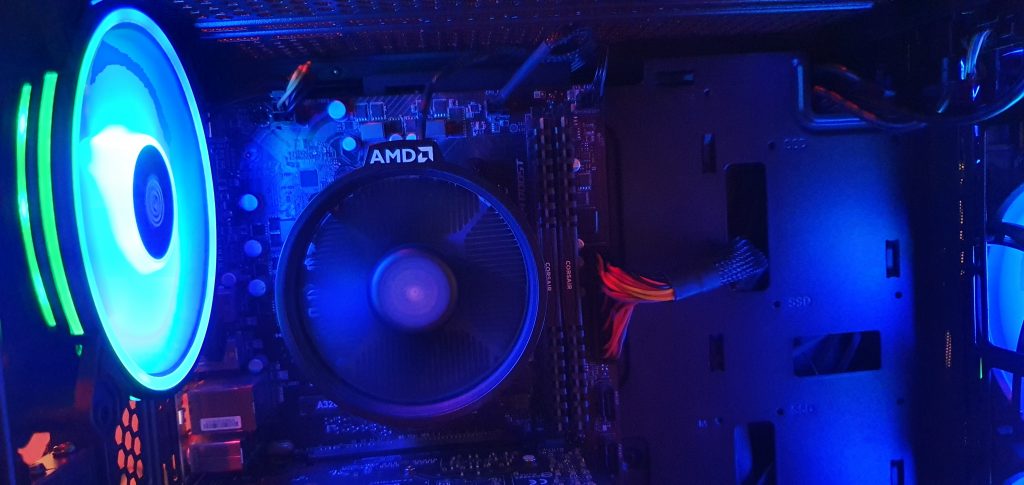
Conclusion
The Citadel Glass SE case was a breeze to work with thanks to its spacious design and numerous cable entries. The case comes with an included remote handset for the synced up ARGB lights on the fans should you not already have your own controller. If you enjoy the lighting up element of PC builds then this case is definitely a great one to take a look at. The glass front with the ARGB front fans behind does look awesome when rotating in sync through various preset colour patterns.
Available for around £70 online, I would highly recommend the Citadel Glass SE case for both new builds and transplants. For me, it scores a solid Thumb Culture Gold Award.

Disclaimer: A sample was received in order to write this review.

YouTube | Facebook | Twitter | Instagram | Discord | Podcast
